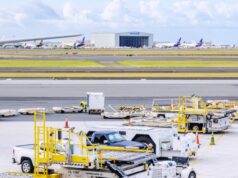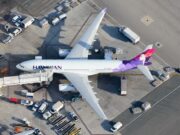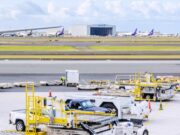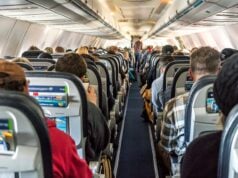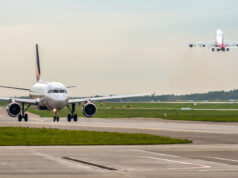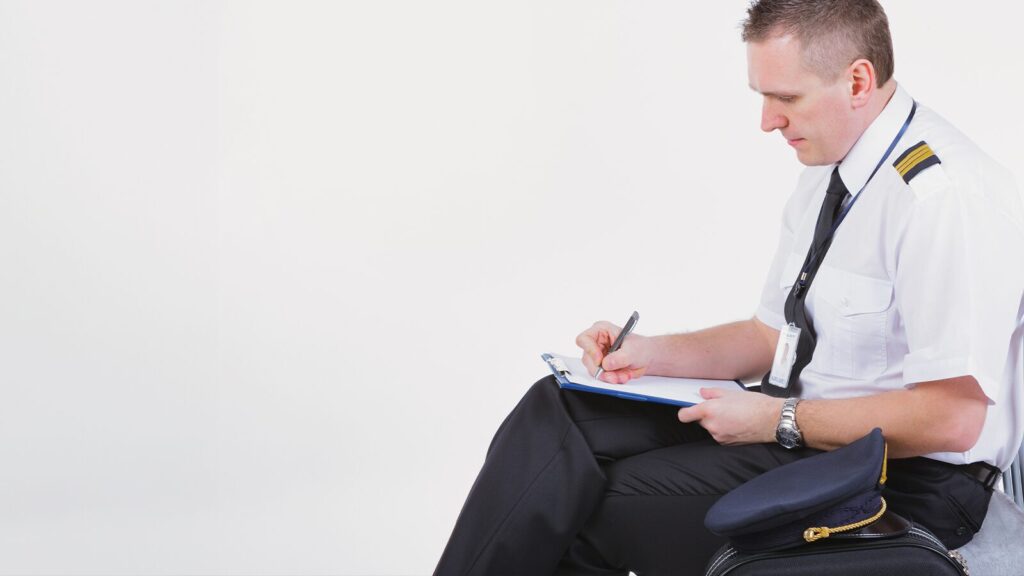
In October, we walked through what to do when faced with a failed training event or line check. This month, we are talking about something that truly might be career ending–a failed breathalyzer or drug test.
Before we get started, due to the sensitive nature of this article, we need to state a few things up front. First, we are not attorneys and this definitely does not constitute legal advice. Second, we are not medical professionals, so this is not intended to diagnosis nor treat. Third, this article is not meant to judge–we are pilots and have seen friends and colleagues lose not only their careers, but in some cases their freedoms, their families, and their lives. Please read this article for it might help you or someone you know.
In this industry, if we are involved in an incident or accident we can expect to complete an alcohol and drug test (see Grey Metter July 2024). We also know that we are required to submit to random drug and alcohol testing via breathalyzer or urinalysis (UA). Typically, this event occurs just before or immediately after a flight where a badged company employee (or local law enforcement official) notifies you of the requirement to submit to a test. If you refuse, the company human resources employee will, per the U.S. Department of Transportation, immediately report this to management, who will in turn suspend you and notify the FAA of your refusal. If requested by law enforcement and you refuse, they will probably arrest you. Either way, the FAA considers a refusal a failed test and will issue an emergency revocation of your medical and pilot certificates. The airline will initiate a formal investigation and likely move to termination proceedings. Basically, the same thing will happen if you blow positive or the specimen you provide for the UA is “hot.” Furthermore, if you are unable to provide a sample for a UA or not provide enough of a specimen within a certain period, (usually two hours), this will also be viewed as a refusal, initiating the same process.
Alcohol and substance abuse are not new to piloting, the airline industry, or indeed life, but the scope of this article is too short to dive into all of this. Yet from a 2022 National Survey on Drug Use and Health, following are a few relevant statistics.
- Nearly 62% of U.S. adults routinely consume alcohol.
- 24% of these reported binge drinking in the previous 30 days (defined by the National Institute on Alcohol Abuse and Alcoholism as having four or more drinks for a woman, and five or more drinks for a man, in about a two-hour period resulting in a blood alcohol content [BAC] of 0.08% or higher).
- 9.4% of those surveyed between ages 21-25 reported high intensity usage, which is double that of binge drinking patterns.
- 11.2% have a diagnosed alcohol-use disorder (AUD), where one in 12 are men and one in 25 are women.
If you missed it, a binge-drinking BAC of 0.08% is twice the “allowed” FAA limit of 0.04% for U.S. airline pilots–though you are likely to be in hot water at 0.02%. If you fly internationally, the allowance in many countries is much stricter, especially in the U.K. where they maintain a zero-tolerance policy for anything other than 0.0% BAC.
Though there is no evidence to suggest that alcohol use and abuse is either higher or lower for professional pilots than the national average, since 2017 the FAA has indicated a continuing upward trend for pilots testing positive for banned substances including alcohol.
For pilots who do drink (and as a reflection of the national population, this means most of us) we know the rules and consequences for non-compliance. So why do pilots drink at all and how does failing a breathalyzer happen?
For insight into why pilots drink, the answer is generally no different than for any other person (or professional) who chooses to do so–usually doing so responsibly: to socialize, relax, and cope. For these first two motives though, the piloting profession is unique in that flight-crew members often do not know each other or know each other well before being assigned to work together; thus, getting together on an overnight for a drink is a routine practice in the industry. Also, because of frequent disruptions to sleep and circadian cycles, some pilots may turn to alcohol to wind down and to help them sleep. As for coping, and despite any beliefs held by the FAA to the contrary, pilots suffer from stress, anxiety, and even depression, and as a result may, as many others do, turn to alcohol to numb them.
As for failing a breathalyzer, the surface answer is simple: the pilot drank to excess and failed to allow enough time for it to be metabolized out of the body and got caught. Does it matter whether this was a routine night for the pilot or a one-off bad decision to over drink? To the FAA it doesn’t matter.
Yet, this modest explanation does ignore a couple of issues. First, the FAA rule is “eight hours bottle to throttle” (with no residual effects, of course, which means no hangover). This little regulatory jingle may have inadvertently led generations of pilots down the path of, “As long as I stop drinking eight hours before my flight, I’m legal,” which may or may not be the case. Depending on the timeframe and amount consumed, it is not only possible, but quite likely that eight hours is simply not enough to be at or under 0.04%, much less 0.0% in the morning, even for a non-binge-drinking pilot. This is why many airlines have shifted to ten, twelve, or more hours between drinking and flying. Not blaming the FAA here, but pilots should have a better understanding of the relationship between drinks-time-metabolism for their own bodies. But if you are regularly timing it down to the minute before stepping into the hotel van, you could be in for a surprise.
Second, the pilot personality may actually be a contributing factor to overdrinking because professional pilots are really good at controlling their emotions, blocking anxiety, and suppressing fear–which are great for handling tense situations and emergencies, but their ability to recognize the warning signs of excessive drinking and even dependency might be subdued.
All this leads us to what to do if you have an untreated or unmanaged abuse disorder, or if you just made a poor decision and drank to excess on the overnight and now there is a person with a badge and a clipboard pointing to you. (By the way, if this situation worries you in any way, then you know why, and you should seek assistance as soon as possible. See the end of this article for some helpful resources.)
Refusing a test will definitely put you on the path to career derailment, and possibly jail, depending on the circumstances. Announcing you have a problem and need help is a great first step, but this is not really the time nor place, and you will still have to take the test or refuse–but either way the path is the same. So, take the test and then call your union representative as soon as possible. Tell them about the test and that you need substance abuse assistance and need to speak with someone. They will get you in touch with the appropriate resources. Ideally, you do this before being confronted with a random drug test, but sadly, it does not often happen this way. The union can also connect you with an attorney because you will almost certainly need one.
The next several hours and days are going to be what they are, but if you have come to the realization that you have an abuse and dependency issue, and if your airline offers or provides access to a Human Intervention and Motivation Study (HIMS) program, this rehabilitation track can preserve your career and your life. With successful completion of this program, FAA approval for a special-issuance medical certificate, continued career-long monitoring (drug testing), and after having re-earned all piloting certificates again, starting with private pilot (plus the associated costs to do so); you can be welcomed back as a professional pilot.
Note: Self-disclosure of an abuse and dependency issue in advance of a random test will not usually result in emergency revocation of pilot and medical certificates.
Finally, though this article focuses on alcohol, we have not forgotten about other drug use. Fortunately, hard drugs do not seem to be a widespread issue in the professional-pilot sector, however abuse of prescription pain medications has been on the FAA’s radar for some time now. If you are found in possession of an expired prescription, a prescription that is not yours, or determined to be under the influence of one while on duty, expect to be prosecuted and the same issues and processes will likely apply.
A couple of other things you should be aware of before we close: 1) Cannabidiol (CBD – oil, chewables, vape, lotions, etc.) is considered a supplement by the FAA, and though not banned per se for pilot use, if you come up “hot” on a test, CBD is not a defense, and the FAA will proceed as outlined above. Remember, these are not controlled products and even if the product is labeled, “No THC,” or “THC Free,” there is no guarantee of this. 2) If you are considering having a joint during that month-long vacation away from flying, understand that THC is fat-soluble, which means it is absorbed by adipose tissue in the body and may not necessarily clear your system in a week, two, three, or four. Although marijuana has become decriminalized in many states for medicinal and personal use, on a federal level and thus in the eyes of the FAA, it remains illegal. Best to avoid it until after you retire.
Thanks for reading and we’ll see you here next month for our final installment of our Disaster on the Road series.
For a more in-depth discussion of drugs and alcohol along with abuse and dependency disorders review the associated chapter in our book The Airline Transition Manual (www.airlinetransition.org).
For assessment and dependency support contact your pilot union or pilot group for assistance.
For ALPA and Canadian pilots, confidential support is available at 309-777-2572
Alcoholics Anonymous www.aa.org
Narcotics Anonymous www.narcotics.com
Birds of a Feather International www.boaf.org
Human Intervention Motivation Study (HIMS) www.himsprogram.com
US Department of Health and Human Services, Substance Abuse and Mental Health Services Administration (SAMHSA) www.samhsa.gov / 1-800-662-HELP (4357)
National Suicide Prevention Lifeline 800-273-8255

































































